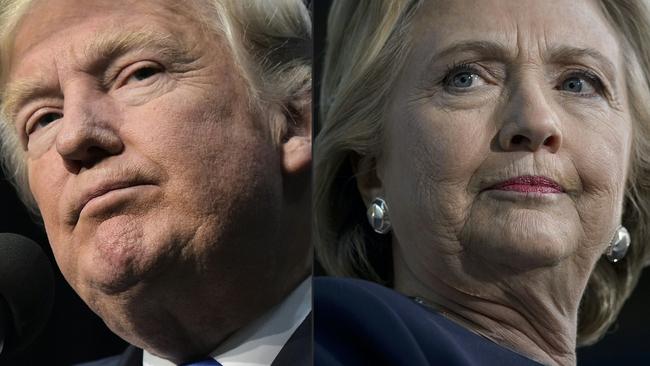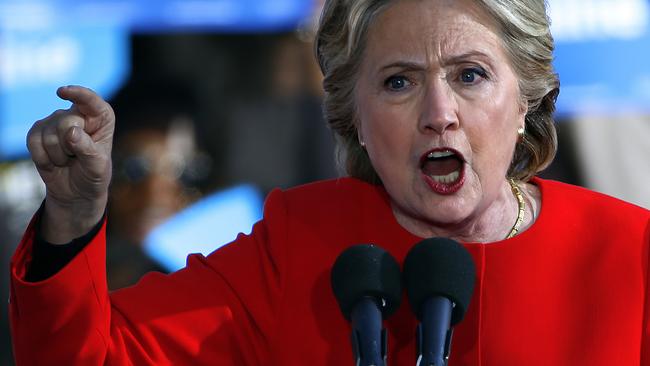US election: What you need to know
WE’RE hours away from knowing who will become the next US president. Here’s everything you need to know for election day.

THE US election is almost over.
After an excruciatingly long campaign, which pit two of the most reviled candidates in America’s political history against each other, we’re hours away from knowing who will become the next president.
Here’s everything you need to know for election day, on Wednesday Australian time.
WHEN THE POLLS CLOSE (AEDT)
11am
Florida, Georgia, Vermont, Indiana, Kentucky, South Carolina, New Hampshire, Virginia
11:30am
North Carolina, Ohio, West Virginia
12pm
Connecticut, Delaware, Washington D.C., Maine, Maryland, Massachusetts, Michigan, New Jersey, Pennsylvania, Rhode Island, Tennessee, Alabama, Illinois, Kansas, Mississippi, Missouri, Oklahoma, Texas
12:30pm
Arkansas
1pm
New York, Louisiana, Minnesota, Nebraska, Wisconsin, Colorado, New Mexico, Wyoming, North Dakota, South Dakota
2pm
Arizona, Iowa, Montana, Utah, Nevada
3pm
California, Washington, Oregon, Idaho, Hawaii
5pm
Alaska
WHEN WILL WE KNOW WHO’S WON?
That’s difficult to say for sure. There are a few scenarios:
• If the result hinges on a razor-close margin in one state, it could get very messy - recall the 2000 election between George W. Bush and Al Gore, which ended up being decided in the Supreme Court more than a month after polling day;
• If the election isn’t too close, a winner could conceivably be declared shortly after 3pm AEDT, when polls close in most of the western states;
• If it’s a landslide, that will become obvious fairly early, as one candidate sweeps the key swing states. In this scenario, we could predict a winner by about 1:30pm AEDT - though it would not become official until the less competitive western states actually declare their results later in the afternoon.

HOW DOES THE ELECTION WORK?
Technically, none of the millions of Americans at the polls will be voting directly for a presidential candidate. Their votes are actually used to choose a group of “electors”, who then pick the next president on their behalf.
You’ve probably seen this map once or twice before. It shows all 50 American states, along with the number of electoral votes up for grabs in each. These electoral votes — one for each elector — are the key to the election.

There are 538 of them in total, divided between the states according to their population. For example California, a large state, has 55 electoral votes, while sparsely-populated Idaho has just four.
On election day, whoever wins the popular vote in any given state claims all of that state’s electoral votes — and the first candidate to 270 electoral votes is declared president-elect. That’s the finish line.
The map above shows what happened four years ago, when President Obama beat Mitt Romney. The states Mr Obama won are coloured blue, while Mr Romney’s states are red. Mr Obama got 51 per cent of the popular vote compared to Mr Romney’s 47 per cent, which sounds close, but the electoral vote was a far more convincing 332-206.
Why? Because Mr Obama won a bunch of key swing states, such as Florida, Ohio and Virginia, by narrow margins. If just a fraction of the 125 million total votes cast had gone the other way in those key states, the landslide would have been a nailbiter instead.
The point here is that the national popular vote doesn’t matter. It’s all about winning the right combination of states to reach that magic number, 270.




